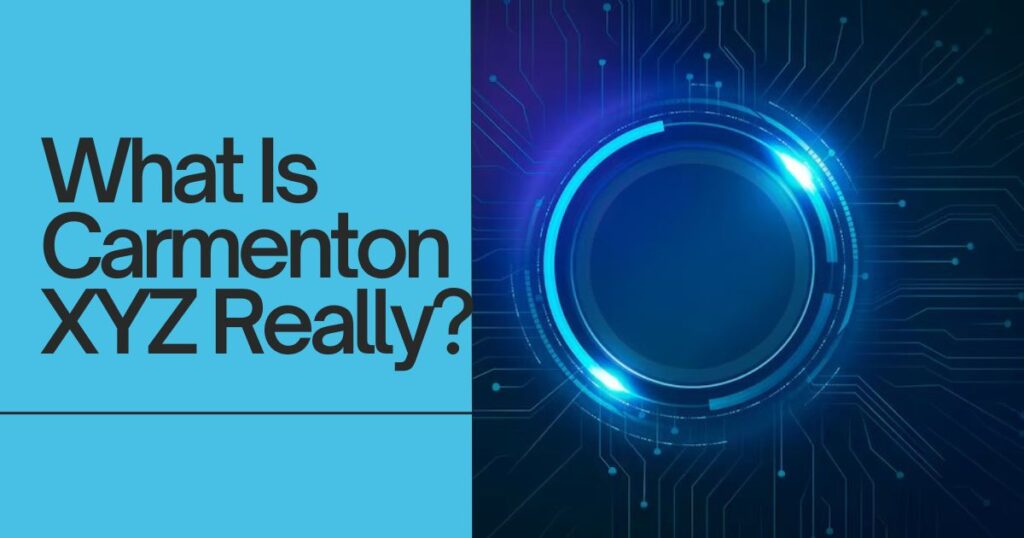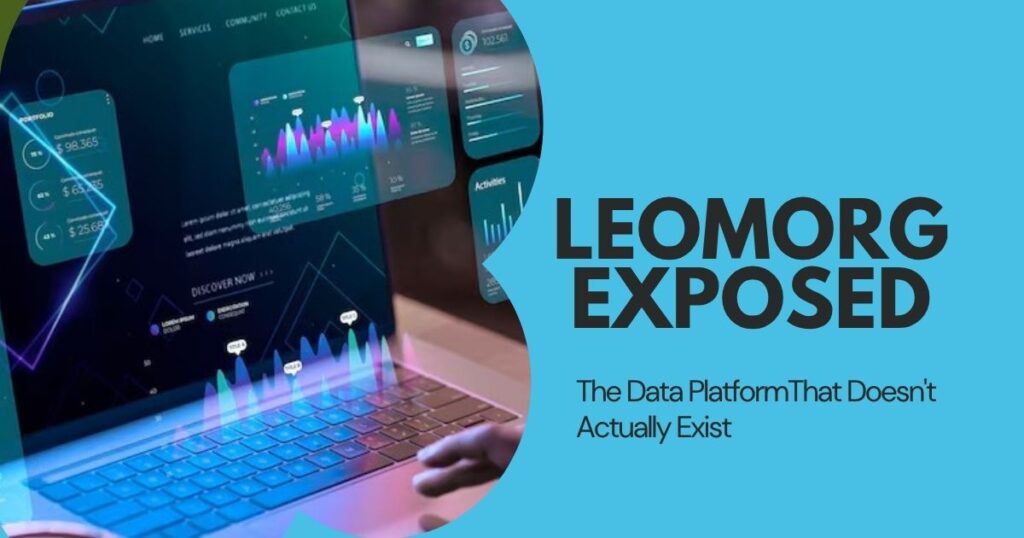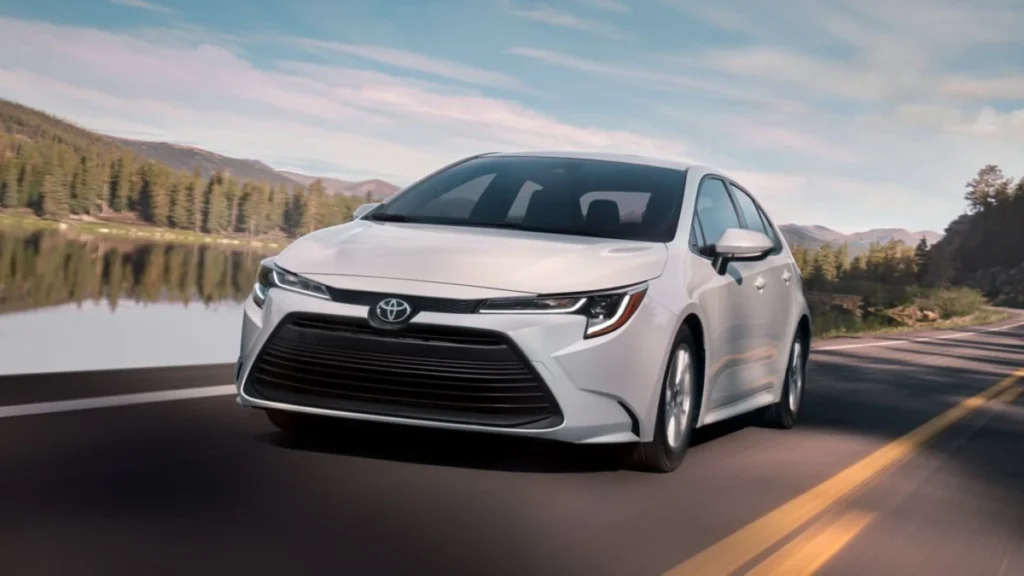Komaki Electric Scooter is an Indian EV manufacturer offering 17+ affordable electric scooter models ranging from ₹29,999 to ₹1.68 lakh. Known for lithium-ion batteries, ranges up to 322 km, removable battery systems, and advanced features like regenerative braking and smartphone connectivity, Komaki targets budget-conscious urban commuters seeking eco-friendly transportation with low maintenance costs.
Picture yourself stuck in traffic, watching fuel prices climb higher each month while your wallet gets lighter. Now imagine gliding past those queues on an electric scooter that costs mere rupees per charge. That’s exactly what thousands of Indians discovered when they switched to Komaki Electric Scooter models—and the brand’s 1200% growth rate suggests they’re onto something.
As one of India’s fastest-growing electric vehicle manufacturers, Komaki has disrupted the two-wheeler market without relying on government subsidies or bank loans. From students commuting to college to delivery professionals covering 50+ kilometers daily, riders across 380+ dealerships nationwide are choosing Komaki for one simple reason: it delivers genuine value where it matters most.
You’re about to discover why Komaki Electric Scooter models consistently outsell competitors, which specific model matches your needs, what real users say after months of ownership, and the hidden costs nobody tells you about before buying. Whether you’re considering your first electric scooter or upgrading from petrol, this guide reveals everything you need to make a smart decision.
Why Komaki Electric Scooter Models Stand Out in India’s Crowded EV Market
India’s electric scooter market explodes with new brands every quarter. Yet Komaki carved a distinct position by solving problems other manufacturers overlooked.
The brand launched in May 2020 with a clear philosophy: make electric mobility accessible without compromising quality. Instead of chasing premium buyers with expensive models, Komaki targeted the massive middle market—students, office workers, small business owners, and delivery professionals who needed reliable transportation at sustainable prices. This focus drove the company to ₹301 crores turnover by March 2022, all through organic growth.
What makes this achievement remarkable is Komaki’s complete independence from external funding. While competitors burned through venture capital or depended on government subsidies, Komaki built sustainable business practices. The company now operates 380+ dealerships across India with over 1,00,000 successful lithium battery installations—proof that affordability and reliability can coexist.
Here’s where Komaki differentiates itself technically. The brand pioneered removable battery systems across multiple models, addressing India’s charging infrastructure challenges head-on. You don’t need dedicated parking with charging points. Just carry the lightweight battery to your apartment, charge it like a laptop, and you’re ready for tomorrow’s commute. This single innovation solved the biggest barrier preventing apartment dwellers from switching to electric scooters.
Battery technology receives special attention at Komaki. The company manufactures its own LiFePO4 batteries—chemistry known for thermal stability and longevity. While generic lithium-ion batteries complete 300-500 cycles, Komaki claims their batteries handle 3,000+ cycles under optimal conditions. That translates to potentially 5+ years of reliable service compared to 2-3 years for standard batteries.
The model range spans every need imaginable. Budget models like the X One start at ₹35,999, perfect for short urban trips. Mid-range options like the SE offer 200km range with dual battery configurations. Premium models feature regenerative braking, smartphone connectivity, and advanced digital dashboards. Commercial variants designed for delivery businesses handle heavy loads across longer routes. This diversity means you’re not forced into compromises—there’s genuinely a Komaki model matching your specific requirements.
People also like to read: https://bestpumphouse.com/caricatronchi/
Popular Komaki Electric Scooter Models: Which One Fits Your Lifestyle
Choosing the right model depends on your daily travel distance, budget constraints, and feature preferences. Let’s break down the standout options.
For Budget-Conscious First-Time Buyers: The Komaki X One priced at ₹35,999 serves as the perfect entry point. This lightweight scooter handles 55-70km range on single charges, making it ideal for college students or professionals with short commutes under 30km daily. Real users praise its nimble handling through congested traffic and minimal maintenance requirements. The X One proves electric mobility doesn’t require significant investment.
For Daily Commuters Seeking Balance: The Komaki Flora sits in the sweet spot at ₹62,311. With 100km real-world range, it covers most urban commute patterns without range anxiety. The spacious footboard accommodates grocery bags—a practical touch users appreciate. One owner mentioned transforming her weekly shopping trips, easily carrying multiple bags through narrow lanes without feeling burdened. This practical design thinking separates functional scooters from spec-sheet performers.
For Range-Focused Riders: If range anxiety haunts you, consider the Komaki SE. This model offers multiple battery configurations: 70km with 1.8 kWh, 120km with 2.75 kWh, 100km with 2 kWh, or incredible 200km with 4.2 kWh batteries. The 3000W hub motor delivers powerful acceleration—essential for highway merges or hill climbs. Priced between ₹59,999 and ₹1.10 lakh depending on battery choice, the SE appeals to riders refusing compromise on range.
For Tech Enthusiasts: The Komaki XGT X5 brings advanced features at ₹1.01 lakh. Its regenerative braking system recovers energy during braking and downhill coasting, extending range by 10-15% in real conditions. The integrated smartphone app tracks battery health, range estimates, and even controls lighting and security features remotely. Modern riders appreciate this connectivity—monitoring scooter status before leaving office ensures no unpleasant surprises.
For Women Riders: Komaki recently launched the X3 series specifically designed for women riders. Starting at ₹52,999, these scooters feature lighter builds, lower seat heights for easier ground reach, and ergonomic designs reducing rider fatigue. The thoughtful approach addresses how women riders often face ignored needs in vehicle design. Special International Women’s Day promotions made two scooters available for ₹99,999, showing Komaki’s commitment beyond marketing lip service.
For Commercial Use: Delivery professionals and small business owners need different capabilities. The CAT 2.0 series, priced around ₹74,999, handles heavy loads and extended daily usage. Some variants carry 500kg loads—transforming last-mile delivery economics. The three-wheeler CAT 3.0 at ₹1.06 lakh offers even greater stability for businesses prioritizing cargo capacity over speed.
Real user reviews reveal interesting patterns. Budget model owners consistently praise reliability and low running costs. Mid-range buyers appreciate feature richness relative to price. Premium model owners highlight build quality and advanced tech integration. Commercial users focus on durability and payload capabilities. This segmentation suggests Komaki successfully targets distinct buyer personas rather than creating one-size-fits-none products.
Understanding Komaki Electric Scooter Battery Technology and Real-World Range
Battery performance makes or breaks electric scooter ownership satisfaction. Here’s what you actually need to know beyond marketing claims.
Komaki uses primarily lithium-ion and LiFePO4 battery chemistries. The lithium-ion variants offer higher energy density—more capacity in lighter packages. LiFePO4 batteries sacrifice some energy density for superior thermal stability and longer cycle life. Both types outperform lead-acid batteries dramatically in weight, charging speed, and lifespan.
Charging times typically range 4-5 hours for full charges across most models. Some users strategically charge during off-peak electricity hours, maximizing savings. The removable battery feature means you’re never tied to outdoor charging infrastructure—a game-changer for apartment residents lacking dedicated parking.
But here’s the crucial truth about range claims: advertised figures rarely match real-world performance. Manufacturers test under ideal conditions—flat roads, moderate speeds, single rider, optimal temperature. Your actual range depends on multiple factors.
Weight matters significantly. A 60kg rider achieves better range than a 90kg rider carrying a backpack. Komaki acknowledges this openly—their SE model estimates 75-90km range under typical conditions despite 120km maximum claim. Honest communication builds trust.
Riding style impacts dramatically. Aggressive acceleration and constant high speeds drain batteries faster than gentle, consistent riding. Using eco mode where available extends range by 15-20% compared to sport mode. One user reported 120km actual range on the SE by maintaining 40kmph average speed and utilizing regenerative braking effectively.
Temperature affects performance. Extreme heat or cold reduces battery efficiency. Komaki recommends storing scooters in moderate temperatures when possible. Riders in northern India notice 10-15% range reduction during winter months. This isn’t a defect—it’s fundamental battery chemistry.
Terrain changes everything. Flat city roads yield advertised ranges. Hilly areas with frequent elevation changes cut range by 20-30%. The regenerative braking on premium models partially compensates by recovering energy on descents, but you still need realistic expectations for your specific geography.
To determine your real range, conduct simple tests. Fully charge your scooter, ride your typical route at normal speeds, and note how much battery percentage drops. Multiply this by total battery capacity to estimate your practical range. This 20-minute exercise prevents unpleasant surprises later.
Battery lifespan realistically spans 2-5 years depending on usage and care. Komaki’s LiFePO4 batteries claim 3,000+ cycles, suggesting potentially 8-10 years under ideal conditions. However, most users should expect 3-5 years before noticeable capacity degradation begins.
People also like to read: https://bestpumphouse.com/holisticke/
Essential Komaki Electric Scooter Maintenance Tips for Long-Term Reliability
Electric scooters require less maintenance than petrol vehicles, but they’re not maintenance-free. Following proper care protocols dramatically extends lifespan and prevents expensive repairs.
Battery care forms the foundation. Never completely drain your battery before recharging. Aim to recharge when it drops to 20-30% capacity. Full discharges stress battery cells, accelerating degradation. Conversely, avoid leaving batteries at 100% charge for extended periods. If storing your scooter for weeks, maintain 40-60% charge levels.
Use only manufacturer-provided chargers or certified replacements. Generic chargers may output incorrect voltage, damaging battery cells permanently. One user replaced his Komaki battery after using a cheaper third-party charger—an expensive lesson in false economy.
Temperature management matters year-round. Store your scooter in shaded or indoor areas when not riding. Prolonged sun exposure degrades plastic components and stresses batteries. During winter, avoid charging immediately after cold rides. Let the battery warm to room temperature first—charging cold batteries reduces efficiency and shortens lifespan.
Regular physical inspections prevent major issues. Check tire pressure weekly. Under-inflated tires increase rolling resistance, draining batteries faster while compromising handling. Inspect brake pads monthly for wear. Replace them before they wear completely through to metal—damaged brake discs cost significantly more than pad replacements.
Keep connections clean and secure. Loose or corroded battery terminals cause power delivery problems. Annually, clean terminals with a soft brush and baking soda solution to remove corrosion. Ensure all connections remain tight and corrosion-free.
Follow manufacturer service schedules. Komaki recommends professional servicing at least annually for comprehensive checks. Technicians inspect electrical components, test battery health with specialized equipment, and catch potential problems before they become failures. This preventive approach costs less than emergency repairs.
Mind your load limits. Every scooter specifies maximum payload capacity. Consistently exceeding this damages suspension, strains motors, and reduces battery efficiency. If you regularly carry heavy loads, choose models designed for commercial use rather than forcing consumer models beyond their capabilities.
Clean regularly but carefully. Wipe down your scooter after dusty or muddy rides. However, never use high-pressure water jets—they force water into electrical components, causing shorts and corrosion. Use damp cloths for cleaning, avoiding direct water spray on control panels or charging ports.
Watch for warning signs requiring immediate attention: unusual motor noises suggesting bearing wear, sudden range drops indicating battery cell failure, brake responsiveness changes signaling pad replacement needs, or dashboard error messages warranting dealer diagnosis. Addressing small problems early prevents expensive cascading failures.
Real users report minimal maintenance costs when following these practices. One owner spent just ₹3,000 on maintenance across two years—mostly tire replacements and one brake pad change. Compare that to petrol scooter servicing costs and fuel expenses exceeding ₹20,000 annually for similar usage.
Cost Analysis: Real Savings with Komaki Electric Scooter Ownership
Purchase price tells only part of the financial story. Let’s examine total ownership costs compared to petrol alternatives.
Initial investment: Komaki models range ₹29,999 to ₹1.68 lakh. Comparable petrol scooters cost ₹60,000-₹1.2 lakh. While some electric models carry premium pricing, many Komaki options actually cost less upfront than petrol equivalents.
Fuel versus electricity costs: This comparison delivers electric scooters’ strongest advantage. Petrol currently costs ₹100+ per liter in most cities. A typical petrol scooter delivering 40kmpl burns ₹2.50 per kilometer. Electricity costs ₹7-10 per unit (kWh) depending on location. A Komaki scooter consuming 25Wh per kilometer (efficient model) costs roughly ₹0.20 per kilometer. That’s 90% cheaper than petrol.
Consider annual commuting: 30km daily across 300 working days equals 9,000km. Petrol costs: ₹22,500. Electricity costs: ₹1,800. Annual savings: ₹20,700. Over five years, you save ₹1,03,500 on fuel alone—enough to purchase another electric scooter.
Maintenance expenses: Electric scooters eliminate engine oil changes, spark plug replacements, air filter changes, and complex transmission servicing. Annual maintenance rarely exceeds ₹3,000-5,000 for electric scooters. Petrol scooters require ₹8,000-12,000 yearly for comparable usage. Five-year maintenance savings: ₹25,000-35,000.
Insurance costs: Electric scooters carry slightly lower insurance premiums due to lower claim frequencies. Annual savings: ₹500-1,000. Minor but accumulates over ownership duration.
Registration and road tax: Electric vehicles enjoy reduced road tax in most states. Some states offer complete exemption during initial years. Savings vary by location but typically range ₹2,000-5,000 over ownership period.
Resale value considerations: Electric scooter resale markets remain developing. Current data suggests 40-50% value retention after three years for well-maintained Komaki models. This lags behind established petrol brands retaining 50-60%. However, as EV acceptance grows, this gap should narrow.
Total Cost of Ownership (5 years):
| Cost Category | Petrol Scooter | Komaki Electric | Savings |
|---|---|---|---|
| Purchase Price | ₹75,000 | ₹70,000 | ₹5,000 |
| Fuel/Electricity | ₹1,12,500 | ₹9,000 | ₹1,03,500 |
| Maintenance | ₹50,000 | ₹20,000 | ₹30,000 |
| Insurance | ₹25,000 | ₹22,000 | ₹3,000 |
| Road Tax | ₹8,000 | ₹3,000 | ₹5,000 |
| Total | ₹2,70,500 | ₹1,24,000 | ₹1,46,500 |
This calculation uses conservative estimates for mid-range models with 9,000km annual usage. Higher usage amplifies savings further.
But wait—there are hidden costs to consider. Battery replacement represents the largest unpredictable expense. After 3-5 years, degraded batteries may require replacement costing ₹15,000-40,000 depending on capacity. Some buyers factor this into purchase decisions, while others risk extending battery life beyond optimal performance.
Charging infrastructure at home requires one-time investment if you lack convenient power outlets near parking. Extension cords or dedicated installations cost ₹1,000-5,000 depending on distance and electrical work required.
Despite these considerations, electric scooters deliver genuine financial benefits for most users. The savings prove most dramatic for high-mileage riders—delivery professionals, sales executives, or long-distance commuters see payback periods under two years.
Making Your Komaki Electric Scooter Purchase Decision
You’ve absorbed the technical details, costs, and real-world performance. Now comes the practical decision-making framework.
Start by calculating your daily needs. Measure your actual commute distance including detours for errands. Add 30% buffer for range safety. This determines minimum battery capacity required. Choosing insufficient range creates daily anxiety. Selecting excessive capacity wastes money on unused potential.
Consider your charging access. Can you charge at home conveniently? Do you have office charging facilities? Models with removable batteries offer flexibility apartment dwellers need. Fixed battery models work fine for house owners with dedicated parking.
Match features to usage. Tech features like smartphone connectivity sound appealing but ask yourself: will you actually use them? If you’re riding 10km daily for grocery runs, basic models satisfy perfectly. Long-distance riders benefit from regenerative braking, digital displays showing real-time range, and multiple riding modes.
Test ride before buying. Specifications never replace actual experience. Visit dealerships, ride multiple models, test handling on typical roads you’ll encounter daily. Notice comfort during 15-minute rides—discomfort amplifies during hour-long commutes.
Verify after-sales support in your area. Research Komaki service center locations near you. Read online reviews about service quality and parts availability. Strong after-sales support matters more than purchase price when problems arise.
Understand warranty coverage. Typical Komaki warranties include 2 years on batteries, 1 year on motors, controllers, and chargers. Ask detailed questions about what’s covered and exclusions. Some warranties void if you use third-party parts or unauthorized service centers.
Calculate your break-even point. Compare total ownership costs against your current transportation expenses. If you spend ₹4,000 monthly on petrol and maintenance for a petrol scooter, a ₹70,000 Komaki model costing ₹1,500 monthly in electricity and maintenance breaks even in 19 months. Every month beyond that delivers pure savings.
Don’t ignore charging habits. Honest assessment matters here. If you frequently forget phone charging, you’ll struggle with scooter batteries too. Electric scooters reward disciplined users who establish consistent charging routines.
Komaki Electric Scooter models succeed because they address real needs at accessible prices. They’re not perfect—battery technology continues evolving, range remains limited compared to petrol, and resale markets need maturity. But for urban commuters prioritizing running cost savings, environmental impact, and reliable transportation, Komaki delivers genuine value.
The electric revolution isn’t coming—it’s here. The question isn’t whether to go electric, but which model fits your life. With this guide, you’re equipped to make that choice confidently.
FAQs
What is the average range of Komaki Electric Scooter models on a single charge?
Komaki Electric Scooter range varies significantly by model and battery configuration. Entry-level models like the X One offer 55-70km, mid-range models like the Flora provide 100km, and premium models like the SE with dual battery systems achieve 120-200km. Real-world range depends on rider weight, terrain, riding style, and weather conditions. Most users experience 15-25% less than advertised maximum range under typical conditions. For accurate estimates, test your specific model on your actual commute route.
How long does a Komaki Electric Scooter battery last before replacement is needed?
Komaki batteries typically last 2-5 years or 300-500 charge cycles for standard lithium-ion batteries, with LiFePO4 batteries potentially reaching 3,000+ cycles (5-8 years) under optimal care. Lifespan depends heavily on charging habits, storage conditions, usage patterns, and maintenance practices. Avoiding full discharges, preventing overcharging, storing in moderate temperatures, and using manufacturer-approved chargers extends battery life significantly. Signs requiring replacement include consistent range below 50% original capacity, inability to hold charges, or physical swelling.
What are the main differences between Komaki and other electric scooter brands in India?
Komaki differentiates through removable battery systems addressing India’s charging infrastructure challenges, in-house LiFePO4 battery manufacturing claiming 3,000+ cycle lifespan versus industry standard 300-500 cycles, complete financial independence without external funding or government subsidy dependence, and comprehensive model range (17+ options) from ₹29,999 to ₹1.68 lakh covering all buyer segments. The brand operates 380+ dealerships nationwide with 1,00,000+ battery installations, demonstrating sustained organic growth. Komaki prioritizes affordability and practical features over premium positioning.










